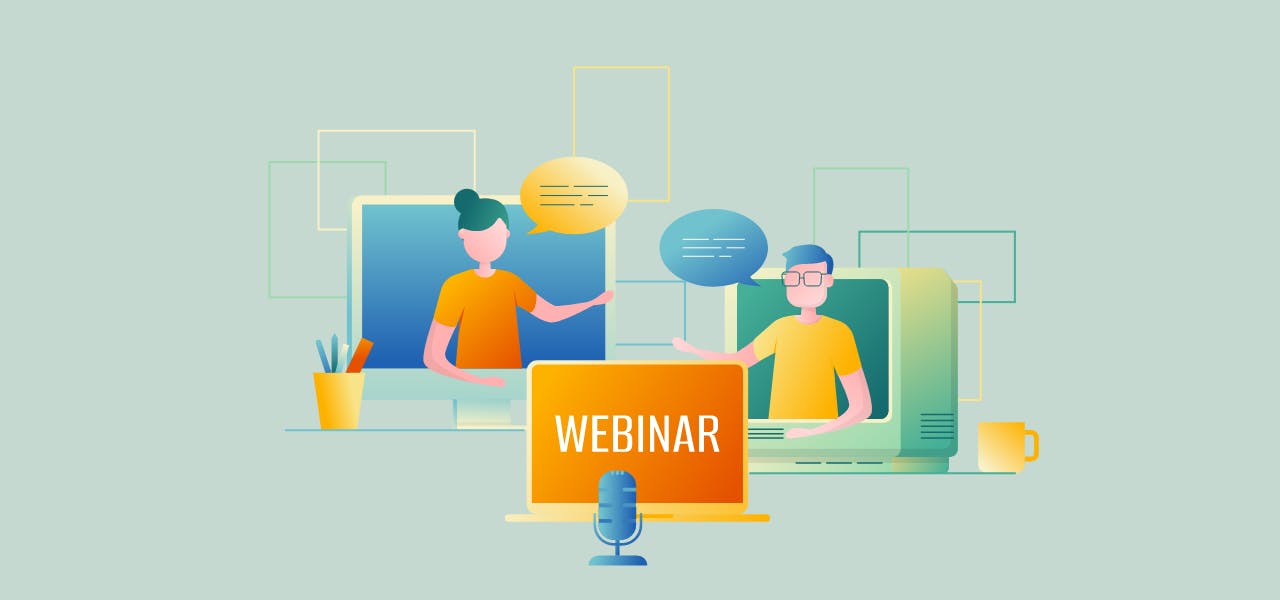Regardless of where you are in society, if you want to continue to grow, you must stay on top of technology. In the world of academics, this includes understanding how to connect with your audience through things like webinars.
Webinars have been around since the 1990s, but their impact was only truly felt after the COVID-19 pandemic. As remote learning became a necessity instead of a perk, webinars were part of every institution’s classroom and became the default method for most industry training platforms.
Today, as we settle into our “new normal,” webinars replace or supplement in-person instruction. They can reach a wider audience than live presentations, and because they’re saved, anyone with permission can use them in the future to teach the same concept. You, too, can use webinars to boost your scholarly audience.
The Multi Purposes of a Webinar
We don’t want to remember the dark days of the coronavirus. For most of us, those were times that are thankfully behind us. However, they did teach us a major lesson: The internet is a literal lifesaver. Consider how you spent your days while the world was locked down. How did you reach out to your friends and family to ensure they were safe? How did you, or most of the people you knew, get their groceries? Updates on the virus? Healthcare? Medications? Entertainment?
Now, imagine going through a pandemic like this a century ago, as our ancestors did. It would have been exponentially scarier to be unable to know if your loved ones in a distant place were okay, to not know what was going on in the world, or to access healthcare for yourself or your family. The internet has changed us as a society by connecting us in a way that no generation has ever had. Now, we can use that bond to expand educational opportunities through webinars.
Webinars provide anyone interested in the lesson the convenience of watching, listening, and learning from anywhere, anytime. By merging the “web” with a “seminar,” you get a webinar that presents information via the internet and accessible technology.
In a live webinar, there are options for two-way interactions to occur. It’s not simply a presentation where the audience watches. They can communicate with the instructor and other viewers in real-time. Attendees are provided with a start time and a planned end time and login credentials to access the webinar. The host provides the materials, such as links and media, and the attendee listens and communicates through a microphone, video, and text.
How to Make an Appealing Webinar
The logistics of creating a webinar are fairly straightforward. Your institution likely has a platform they want you to use, and your tech department can help you set the software up and provide you with the essential hardware.
From there, it’s your job to plan the lesson. As with an in-person course, it’s up to you to prepare the material and content in a way that appeals to your audience. However, now that it’s in a remote learning format, this gets a bit tricker than an in-person lesson. Follow these tips to connect with a wide audience of distance learners:
● Include a format that clearly connects you with your audience. If the presentation is a basic “you speak, they listen” lesson, you will lose a lot of viewer attention. Intersperse your lesson with opportunities for question and answer and feedback.
● Consider the visual elements strategically. When you teach your lesson, you’ll be looking at the camera and whatever you need at that moment. The audience will have a lot of time to check out your classroom, the media you’re presenting, and whatever is on their camera view. It’s an important part of webinar creation to enhance your lesson with visual images that are helpful to understanding the topic but not distracting from it.
● Keep the text on your slides short and to the point. You should not be reading from them. They should only have the key points you’re discussing written, and the audience will need to listen to you to get the full lesson.
● Make your webinar accessible to a diverse population. Inclusivity is vital on the higher education spectrum. Pay attention to how you’re using minority and majority populations, and add captioning for hearing impaired and strategic audio for visually impaired students.
Add Your Webinar to Your Impactio Profile
We can’t guarantee every lesson you conduct will be a hit. You could be teaching content that is, well, not as exciting to your students as something else. The overall presentation and interest level are up to your lesson planning. But with these tips, you’ll reach a wider audience and get your content out to them in an accessible and professional format.
When you’ve mastered the webinar platform, head to your Impactio profile and add a link to your favorite session on your portfolio. Let your network of fellow Impactio scholars see your impressive abilities and how you’re making an impact on your students.
